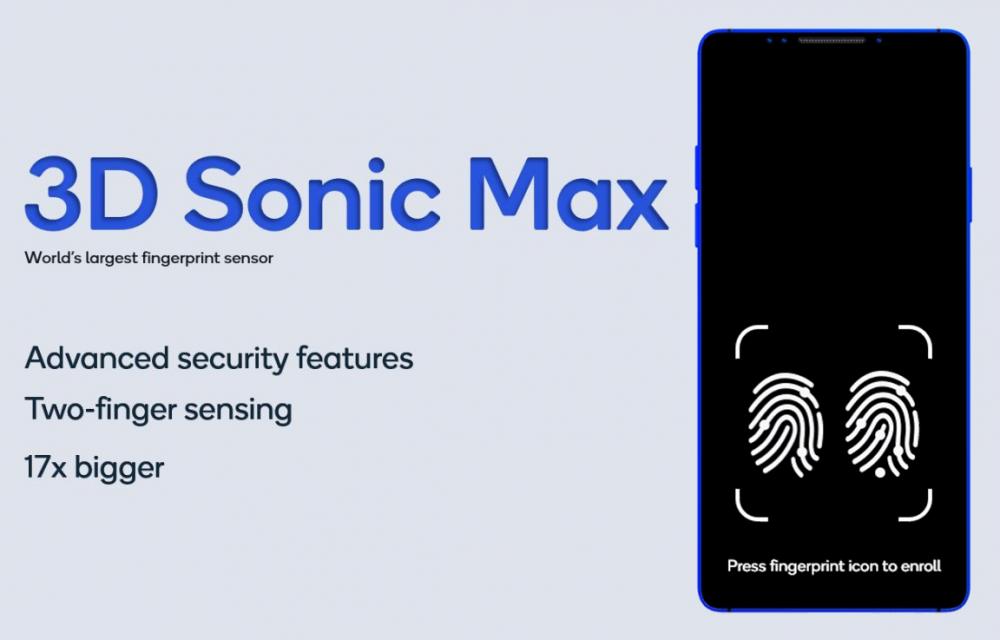Unfortunately, 3D Sonic Sensor didn’t quite match the hype it had generated. Early adopters, Samsung Galaxy S10 and Galaxy Note 10 owners complained of slow unlock speeds undeserving of Qualcomm’s reputation. Not only that, placing your finger to a sensor surface area was like resting a needle in a haystack. Getting the right alignment to unlock your device was more of a hit than a miss. In addition, the fingerprint security was iffy when it most mattered, to say the least. This Fort Knox could be hacked quite easily with the right tools and a pair of nimble fingers.
3D Sonic Max: What to Expect
Measures 20 mm x 30 mm The sensor is 0.15 mm thick It can read two fingerprints simultaneously Fingerprint data is processed directly by the hardware without the need for additional algorithms.
17x bigger is better
First off was the size of the fingerprint sensor is big. Much bigger than previously. Where before the fingerprint sensor was a mere 4mm by 9mm, a later update increased this surface area to 8mm by 8mm. The new 3D Sonic Max goes all out and measures a decent 20 mm x 30 mm, which is 17x bigger. That should silence some of us with fat fingers. More fingerprint real estate gives the sensor more than enough material to work with. The previous issues of spoofing the sensor with $3 silicon covers would, in theory, be a thing of the past.
Two-finger authentication
Do you know what you can do with a large fingerprint sensor? I know, know! Scan two fingers at the same time! Well, well, unless we evolve a sixth finger to keep up with our technology, I honestly don’t see myself scanning two fingers. Hear me out. A handheld device gives you two options to unlock it using fingerprint authentication. The first is the index finger at the back with the device cradled in the palm of your hand. The second option is the opposable thumb at the front. Both options can be easily executed with one hand. But scanning two fingers all at once? Maybe my resistance to change will reunite me with dinosaurs.
The Galaxy S10 Ultrasonic Fingerprint Sensor has a BIG flawHow does Samsung’s ultrasonic fingerprint scanner differ from other in-screen readers?5 reasons you might want a smartphone with an In-display fingerprint sensor
Is it better?
Qualcomm claims that 3D Sonic Max delivers 1::1,000,000 compared to 1::50,000 accuracy of the original 3D Sonic sensor. That’s better right? We hope so. Qualcomm also says its sensor packs a slew of advanced security features on top of being fasterng faster. However most of this cannot be determined as of yet, given that, well, 3D Sonic Max is not yet out. So, there’s that.
When to Expect 3D Sonic Max?
Our money is on 2020 being the year we might most probably see devices sporting 3D Sonic Max. What we aren’t sure of is whether big-hitters like Samsung will take the bait. Samsung took a beating due to ultrasonic fingerprint flaws in their Galaxy S10 and Galaxy Note 10 lineups. There are rumours that Apple might take up the mantle and incorporate in-display ultrasonic fingerprint scanners in its next releases this year 2020 or in 2021. We can’t say more about that, only that Alex Katouzian, senior vice president and general manager of mobile at Qualcomm hinted at announcements this year. Fingers crossed.
Featured Image: Digital Trends

